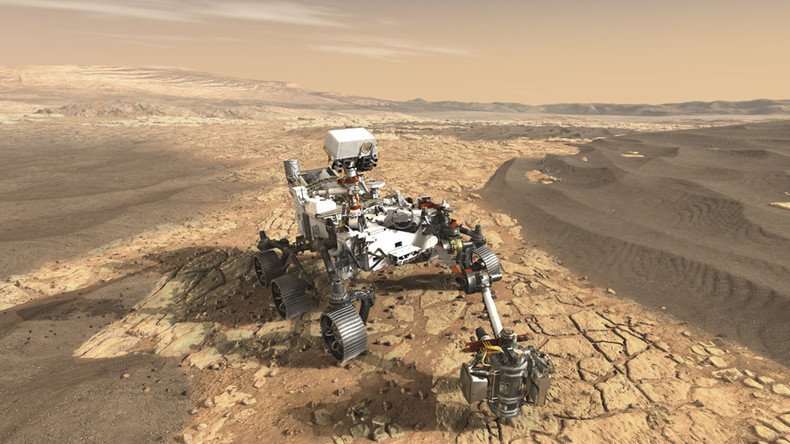NASA unveils first concept pic of Mars 2020 Rover (PHOTO, VIDEO)

NASA’s long-awaited and highly ambitious Mars 2020 mission draws ever-closer and the agency has just released the first concept image of humanity’s next great robotic explorer.
The 2020 rover improves on a wide variety of technologies used on the Curiosity mission and will seek out signs of habitable conditions for microbial life in Mars’ past and clues that such life ever existed in addition to a multitude of other research, according to a NASA press release.
"On Mars 2020... there's a payload on there called the MOXIE payload, it's going to take the Martian atmosphere, convert it to oxygen that can then be used for humans that will go – or for return fuel to have those astronauts come home," Dennis Andrucyk from NASA’s Science Mission Directorate said in an interview with ABC.

The Martian atmosphere is 96 percent carbon dioxide and successfully converting the Martian air to oxygen is critical for the viability of future human colonization.
To cut costs and minimize risks, the mission is timed for launch in a window between July and August 2020 when Earth and Mars are as close to each other as possible.
"It would take six months get there, six months to get back. When it comes to planetary alignments, you might be on Mars for a two-year mission if you go there,” Andrucyk added.
The new rover will make use of a technique known as ‘Depot caching’ which features a drill collecting core samples from strategic sites on the Red Planet which can then be collected and stored on the surface for future analysis back on Earth.
Countdown to Armageddon: Only 100 years left to ‘colonize another planet’ – Hawking https://t.co/kWtYbomlRcpic.twitter.com/DYeOXvyPmi
— RT (@RT_com) May 16, 2017
The 2020 mission will replicate the "skycrane maneuver" used to land the Curiosity Rover which greatly reduces the risk of damaging the rover on entry through the atmosphere.
It will also feature a microphone to allow engineers to analyze entry, descent, and landing metrics, as well as monitoring the machine’s performance on the surface as it carries out its mission which is scheduled to last one Mars year or 687 Earth days.
The 2020 rover design, which includes new, more adaptive wheels, will increase its range up to 20 kilometers (12.4 miles). For context, the curiosity has only covered 16 km in the four years since it arrived on the Red Planet.
NASA released an interactive 360 video of a replica of the new rover in January.
The 2020 Rover is part of NASA's Mars Exploration Program, a long-term effort of robotic exploration of the Red Planet.
It will provide unprecedented data for determining the viability of manned missions to Mars in the future. This includes identifying resources such as subsurface water, improving landing techniques, and characterizing weather, dust, and other potential environmental conditions that will greatly the impact the lives astronauts who would be living and working on Mars.












